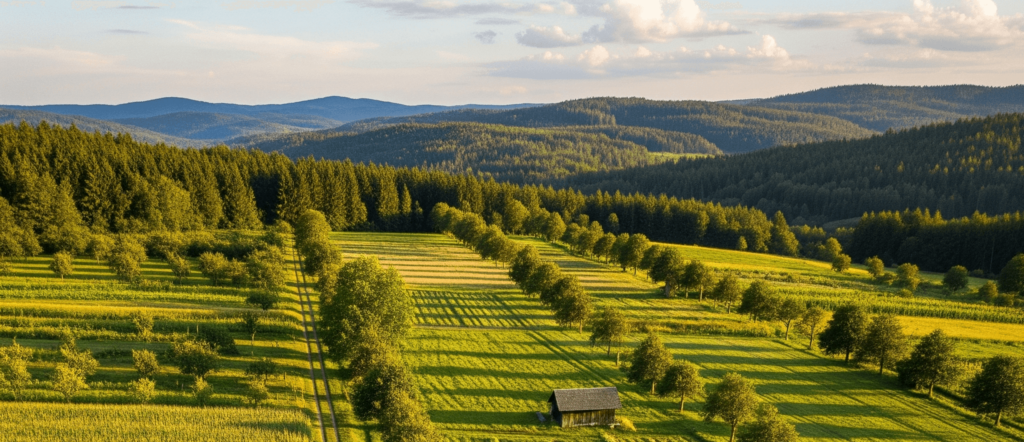Agroforestry
Concept / Definition
- Agroforestry is a sustainable land-use system where woody perennials (trees, shrubs, bamboos, palms) are deliberately integrated with crops and/or livestock on the same land unit.
- These components may be arranged spatially (side-by-side) or temporally (in sequence), with both ecological and economic interactions.
- ICRAF (1982): Agroforestry is a collective name for land-use systems and technologies where woody perennials are used on the same land as agricultural crops and/or animals in some form of spatial or temporal arrangement.
Key Features
- Combines forestry + agriculture + animal husbandry.
- Promotes ecological balance while providing food, fodder, fuel, timber, fiber, and income.
- Ensures sustainable productivity of land.
Objectives of Agroforestry
- Sustainability → improve soil fertility, reduce erosion, conserve biodiversity.
- Productivity → enhance yield per unit area/time.
- Profitability → diversify farmer’s income (fuelwood, fodder, timber, fruits).
- Protection → shelterbelts, windbreaks, erosion control.
- Socio-economic benefits → employment, rural energy, reduced migration.
Importance of Agroforestry
- Environmental Importance
- Reduces soil erosion (tree roots stabilize soil).
- Improves soil fertility (N-fixing trees, litter recycling).
- Enhances carbon sequestration → climate change mitigation.
- Conserves biodiversity and provides wildlife habitat.
- Acts as windbreaks & shelterbelts, protecting crops.
- Economic Importance
- Provides multiple outputs (food, fodder, fuel, timber, fruits, gum, resin).
- Diversified income → reduces farmer’s dependence on single crop.
- Promotes year-round employment.
- Improves resilience against market fluctuations.
- Social Importance
- Provides fuelwood and fodder for rural households.
- Enhances livelihood security for small & marginal farmers.
- Reduces women’s drudgery (fuel, fodder availability near homestead).
- Promotes community participation in land management.
- Agricultural Importance
- Improves microclimate for crops.
- Provides nutrient cycling (leaf litter → organic manure).
- Reduces weeds and conserves soil moisture.
- Supports integrated farming systems.
Key Facts for ASRB NET
- Agroforestry = Agriculture + Forestry + Livestock.
- It is a climate-resilient, resource-efficient land use system.
- Major agroforestry systems in India: Agri-silviculture, Agri-horticulture, Silvi-pastoral, Agri-silvi-pastoral, Taungya system.
- Agroforestry Policy of India was launched in 2014 (India became the first country in the world to have a dedicated National Agroforestry Policy).
- ICRAF (World Agroforestry Centre) is the global organization for agroforestry research.
- Carbon sequestration potential: ~0.25 to 0.60 Mg C/ha/year in tropical systems.

